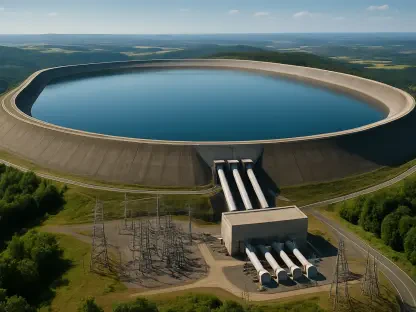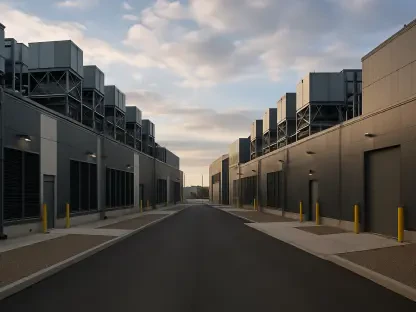Artificial intelligence continues to evolve rapidly, demanding increased computational power and energy to fuel its capabilities, propelling energy supply to the forefront as its ultimate challenge. The exponential growth of AI technology is leading to dramatic spikes in electricity needs, placing immense pressure on conventional energy systems and providers. Rising operational costs further complicate this scenario, prompting an urgent search for innovative solutions to meet AI’s burgeoning demand. As the AI sector stretches existing infrastructure, utilities are tasked with devising strategies to support this technological surge while considering economic viability. Meanwhile, the oil and gas industry faces transformative shifts, grappling with challenges linked to resource depletion, geopolitical uncertainties, and stricter regulatory constraints. Once bolstered by efficiency-driven expansion and abundant reserves from the shale boom, the industry now confronts a landscape defined by resource-intensive operations and escalating expenses. Traditional energy sectors must innovate and collaborate to sustain and progress in this new environment.
The Intersection of AI and Energy Sectors
The synergy between AI and the oil and gas industry is emerging as a promising solution to address the energy demands of cutting-edge technologies. Historically distinct, these sectors are now exploring common goals and collaborative strategies, reflecting their interdependence, as demonstrated by forums like CERAWeek, where energy executives and tech leaders address shared challenges. Aligning strategies between these industries is crucial to supporting AI’s infrastructure growth while seeking energy sources to power vast computing networks. The interdependency between energy supply and computing capacity propels this collaboration, indicating an evolving relationship driven by AI’s exploding power needs. While renewable energy offers long-term promise, it faces formidable barriers such as grid interconnection delays and regulatory opposition. Meanwhile, developments in nuclear and geothermal energy present potential solutions, though their widespread impact remains in the distant future, channeling focus toward more immediate options.
Natural gas emerges as a key player in bridging the current supply gap while meeting future demands from AI technology. This resource is lauded for its abundance, dispatchability, and reliable infrastructure, making it an attractive option despite the societal and environmental controversies it presents. Major energy corporations like Exxon and Chevron are already positioning natural gas as a dependable power source for data centers, underscoring the intertwined goals of the technology and energy sectors. This approach signifies a pragmatic shift toward collaboration and shared interests, where acknowledging interconnected needs is fundamental. Nonetheless, a diversified approach incorporating renewables, storage solutions, and emerging technologies is imperative for comprehensive energy strategies. Political realities and regulatory challenges present obstacles to swift implementation, thus highlighting the importance of transitional solutions like natural gas as vital interim measures.
Strategic Collaboration and Innovation
Artificial intelligence is advancing at an impressive pace, necessitating more computational power and energy, making energy supply a key challenge. The rapid expansion of AI technology results in surging electricity demands, putting traditional energy systems under significant strain. Rising operational costs complicate these challenges further, leading to an urgent need for innovative solutions to satisfy AI’s growing needs. As AI stresses current infrastructure, utility providers must develop strategies that foster technological growth while maintaining economic stability. Simultaneously, the oil and gas industry is undergoing major changes, facing obstacles like resource scarcity, geopolitical tensions, and strict regulatory measures. Once fortified by efficient growth and plentiful shale reserves, these industries now find themselves navigating a complex terrain marked by resource-heavy operations and rising costs. It’s vital for these traditional energy sectors to innovate and collaborate effectively to endure and prosper in this environment.









